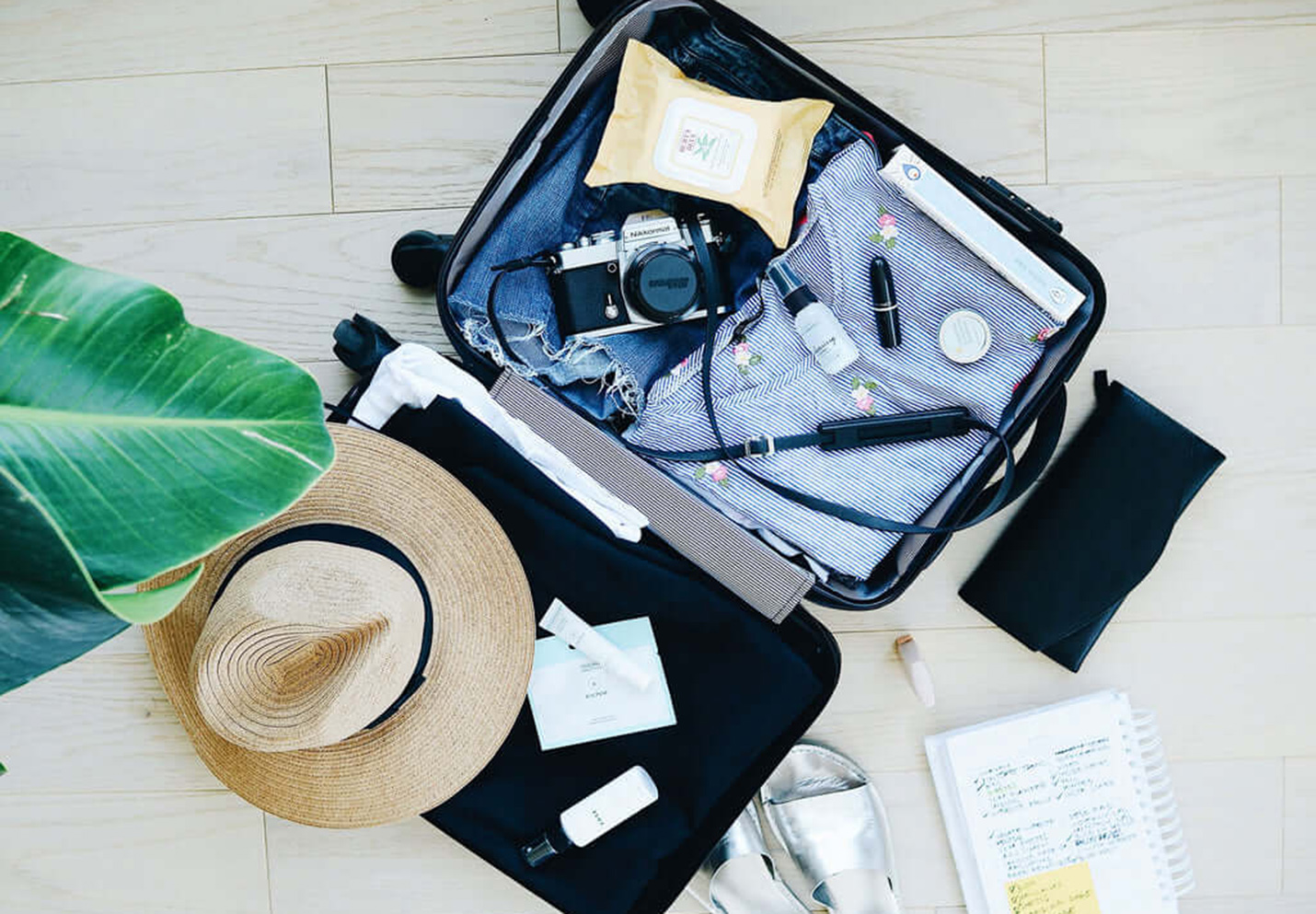I can say this city is a perfect blend of rich history, vibrant culture, and modern charm. But to truly enjoy your trip and avoid common tourist pitfalls, there are a handful of insider tips and hacks I always share with fellow travelers. From navigating Boston’s public transit to choosing what to wear, handling your budget, and savoring local street food safely, these 10 hacks will transform your visit into an unforgettable adventure.
1. Pack Smart: Boston Travel Essentials and Weather Tips
Boston’s weather can be notoriously unpredictable. I’ve learned that packing smartly is essential:
- Layering is key: Even in summer, mornings and evenings can be chilly. A light jacket or fleece layered over T-shirts works perfectly.
- Weather-proof shoes: You’ll walk a lot, especially if you explore the Freedom Trail or neighborhoods like Beacon Hill. Comfortable sneakers or walking shoes are a must.
- Umbrella and raincoat: Boston’s spring and fall are prone to sudden showers, so pack a compact umbrella and a waterproof jacket.
- Seasonal notes: Winters can be brutal with snow and freezing temps, so if you visit then, bring insulated boots and thermal layers.
- Tech accessories: Don’t forget portable chargers and adapters if you’re coming from abroad.
My Personal Experience:
During one April visit, I underestimated the chill and sudden rain. A local recommended layering, and that saved me from a soggy, uncomfortable day. I also carry a reusable water bottle, since Boston has plenty of water fountains and it helps cut down on plastic waste.
2. Navigating Boston Public Transport: Subway vs. Bus vs. Commuter Rail
Boston’s MBTA (Massachusetts Bay Transportation Authority) system can seem daunting but mastering it is easier than it looks.
- The “T” subway: Boston’s subway lines are color-coded — Red, Orange, Blue, and Green lines — each connecting key parts of the city. The subway is often the fastest way to get around downtown and neighborhoods.
- Buses: MBTA buses cover areas not reached by the subway, including parts of Cambridge and Dorchester.
- Commuter Rail: For trips outside the city center — think to coastal towns or suburbs — the commuter rail is your best bet.
How I Use the “T”:
I usually rely on the subway for quick, efficient travel. The Red Line is my go-to, connecting from Cambridge (near MIT and Harvard) through downtown to South Station. I once took the commuter rail for a day trip to Salem, which was smooth and scenic.
Tips for Buying Transit Passes:
- CharlieCard: This reusable plastic card is my favorite for MBTA rides — it offers discounted fares compared to paper tickets.
- CharlieTicket: Good for visitors, it’s a paper ticket but more expensive than using a CharlieCard.
- Link: You can also use apps like Transit or the MBTA app to buy and reload fares.
Subway vs. Bus:
- Subway is faster but can get crowded during rush hours.
- Bus rides are scenic but slower.
- I always check Google Maps or Transit app for real-time schedules and delays.
3. Currency Exchange and Budgeting for Boston
- Currency: The U.S. dollar is the standard. ATMs are plentiful, but fees vary — I recommend withdrawing larger amounts at once to minimize fees.
- Credit cards: Widely accepted everywhere, even at food trucks.
- Budget tips: Boston can be pricey, but there are ways to save:
- Eat at local markets and food trucks instead of fancy restaurants.
- Use city passes (like the Go Boston Card) for discounts on attractions.
- Book accommodations early to lock in deals.
My Budgeting Approach:
I always set a daily spending limit and track it on my phone. I also carry some cash for tipping and small purchases, but mostly rely on credit cards for safety and rewards.
4. Dressing for Boston: What to Wear and When
Boston is a city where fashion meets practicality.
- Urban casual: During the day, casual clothes and sneakers work best.
- Evenings: If you plan to visit theaters or upscale restaurants, pack a smart casual outfit.
- Seasonal dressing:
- Spring/Fall: Layers with scarves and hats.
- Summer: Light cottons and sunglasses.
- Winter: Heavy coats, gloves, hats, and boots.
My Fashion Tips:
On chilly evenings near the Charles River, I often layered a nice sweater with a windbreaker. Also, pack a day bag to stash extra layers as the day warms up.
5. Savor Boston’s Street Food: What to Try and How to Stay Safe

Boston’s street food scene is vibrant — from classic clam chowder to the infamous lobster roll.
Must-Try Street Foods:
- Clam Chowder: Thick, creamy, and loaded with clams. Try it at Quincy Market.
- Lobster Roll: Fresh lobster chunks in a buttery toasted bun, often found at street vendors in Seaport.
- Cannoli: A sweet Sicilian pastry from the North End.
- Boston Cream Pie: Technically a cake, but a local favorite.
- Roast Beef Sandwich: A Northeastern classic.
Food Safety Tips:
- Choose vendors with visible cleanliness and certification.
- Eat where there’s a crowd — turnover means fresher food.
- Drink bottled water or filtered water from your bottle.
My Experience:
I vividly remember biting into a lobster roll at a vendor near the harbor — the buttery softness paired with fresh lobster was unforgettable. I always check for vendor reviews on Yelp or Tripadvisor before trying new stalls.
6. Local SIM Cards and Staying Connected
Staying connected is crucial, especially for navigation and translation.
- Where to get SIM cards: You can buy prepaid SIM cards at airport kiosks, mobile stores in Downtown Boston, or order online to pick up upon arrival.
- Popular carriers: Verizon, AT&T, and T-Mobile all have good coverage.
- Plans: Look for short-term tourist plans offering data and calls.
- eSIMs: Some carriers support eSIMs, which you can activate without a physical card — great if your phone supports it.
My Tech Tip:
I use a local SIM for my Boston trips to avoid high roaming fees. Verizon’s prepaid plan worked well for me, with reliable 4G coverage throughout the city and suburbs.
7. Planning Your 5-Day Boston Itinerary
To make the most of your trip, here’s a mini itinerary I recommend:
Day 1: Freedom Trail & Downtown
Walk the historic Freedom Trail, visit Faneuil Hall, and explore Quincy Market.
Day 2: Museums and Harvard
Visit the Museum of Fine Arts and the Isabella Stewart Gardner Museum. Spend the afternoon in Harvard Square.
Day 3: Waterfront & Seaport District
Stroll along the Harborwalk, visit the New England Aquarium, and dine at seafood restaurants.
Day 4: Cambridge & MIT
Tour MIT’s campus, explore Kendall Square’s tech vibe, and enjoy river views from Charles River Reservation.
Day 5: Day Trip to Salem or Cape Cod
Take a commuter rail or bus to Salem’s witch trial sites or relax on Cape Cod’s beaches.
My Planning Insight:
I balance busy sightseeing days with more relaxed ones by the water, so I don’t get burned out. Booking tickets online in advance saved me hours waiting in line.
8. Adjusting Your Budget on the Fly
Traveling can be unpredictable. I always keep some flexibility:
- Use apps like Trail Wallet or TravelSpend to monitor expenses.
- Look for last-minute deals on tours or restaurants.
- If overspending, I switch to cheaper meals (like food trucks or grocery stores).
- Take advantage of free events like concerts, parks, or museums with “pay what you wish” days.
9. One-Day Trips from Boston You Can’t Miss
Boston’s location offers amazing day trips:
- Salem: Famous for its witch trials history and charming streets.
- Concord and Lexington: Birthplaces of the American Revolution.
- Cape Cod: Beaches, lighthouses, and quaint towns.
- Plimoth Plantation: A living history museum about Pilgrim settlers.
My Favorite Day Trip:
Salem stole my heart — the blend of history, quirky shops, and ocean views made it a perfect escape. The commuter rail from North Station took just 30 minutes.
10. Travel Insurance: What I Use and Why It Matters
Travel insurance is a must, especially for US trips.
- My go-to provider: I always use World Nomads, which offers comprehensive coverage for medical emergencies, trip cancellations, and lost luggage.
- Why I recommend it: Their policies are flexible, affordable, and specifically cater to international travelers.
- Booking: I purchase insurance as soon as I book flights and accommodations.

Embracing Boston Like a Local
Boston is not just a city you visit — it’s a city you experience, with layers of history, culture, and everyday life intertwined in its streets, parks, and neighborhoods. Over my many visits, I’ve come to realize that traveling here is about balancing the iconic sights with the small, often overlooked moments that truly define the city.
One of the biggest takeaways from my trips is that planning well pays off, but leaving room for spontaneity makes the journey memorable. The 10 travel hacks I shared are designed to help you avoid common frustrations, save money, and maximize your time, but equally important is giving yourself permission to wander without a strict itinerary. Boston’s charm often reveals itself in the unexpected — a local jazz performance in a small pub, a quiet bench overlooking the Charles River at sunset, or striking up a conversation with a shop owner in the North End.
The People and the Pace
Bostonians carry a proud heritage and a warm hospitality that may surprise first-time visitors. Once I let go of the “tourist” mindset and started to interact genuinely — asking locals for recommendations, chatting with baristas, or exploring community markets — I found the city felt more like home. This is why understanding the public transit, knowing where to eat safely, and having a realistic budget are not just conveniences — they become your tools to connect deeper with the city.
Reflecting on My Boston Experiences
I remember the chill of an early spring morning when I stood on the steps of the State House, watching the city wake up around me, the golden dome glowing against a soft pink sky. On another trip, savoring clam chowder at Quincy Market wasn’t just about food — it was about being part of a tradition that dates back centuries. Each hack I’ve shared helped me unlock these moments without stress or confusion.
Beyond the Basics
Traveling smart also means being prepared for the unexpected — weather changes, transit delays, or last-minute plans. Always keep an eye on local news and transit apps; I personally rely on the MBTA app and Weather Channel for real-time updates. I also recommend downloading offline maps and having a backup power bank handy.
Encouraging Sustainable Travel
Lastly, as travelers, we have a responsibility to respect the places we visit. Boston’s environment and historic sites thrive when visitors tread lightly. Using reusable water bottles, supporting local businesses, and choosing public transit over taxis whenever possible all contribute to preserving Boston’s unique character for future generations.
If you follow these hacks, you’ll not only see Boston’s highlights — you’ll feel its heartbeat. You’ll understand why this city inspired so many pivotal moments in American history and why it continues to attract dreamers, scholars, and wanderers alike. The cobblestone streets, the hum of the subway, the aroma of fresh lobster rolls — all come together in a symphony that defines Boston.
So pack your bags, lace up your walking shoes, and dive in. Boston is waiting — ready to show you its secrets, and I promise, it will be a journey you’ll cherish forever.




